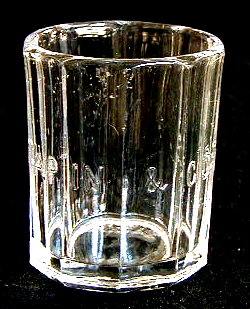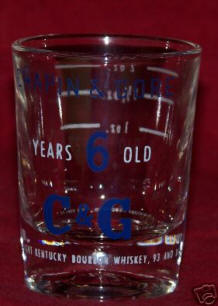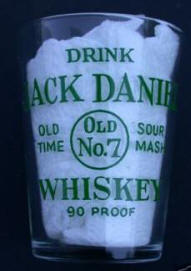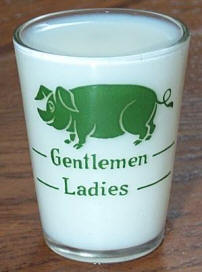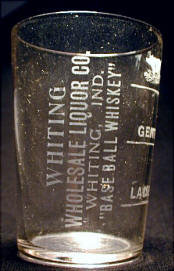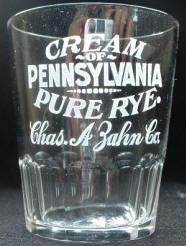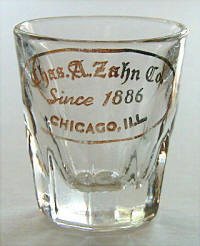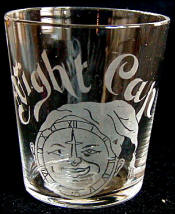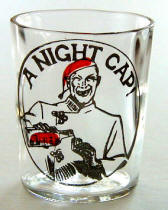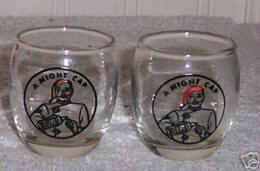|
Introduction
In
Historic Shot Glasses (HSG), Barbara Edmonson notes
on page 4
that the pre-Prohibition years were the proverbial glory days of the
whiskey industry. Prior to January 16, 1920, thousands of both large
and small businesses produced thousands of whiskey brands.
|
|
|
The Old and the New
(Part I) |
|
With Prohibition came a dry spell, both
figuratively and literally. When the 18th Amendment was repealed
effective December 5, 1933, the road was paved for these firms to get
back into business. Although many did just that, many, unfortunately,
did not. The lean years of Prohibition had shut their doors permanently.
This article concerns those companies that did get back into business.
That is, this article will compare the pre-Prohibition and
post-Prohibition shot glasses of firms that were in the liquor industry
both before and after the Prohibition era.
Note that it is not always easy to identify pre-pro and post-pro
glasses. Ms. Edmonson remarks on
page 7 in
HSG that even she could not always distinguish between the two.
She comments that although post-Prohibition glasses are generally
thick-walled with even thicker, heavy bottoms, thick walls and a heavy
bottom are not sure indications of contemporary production. In addition,
the presence of embossed lettering is not always a characteristic of a
post-pro glass.
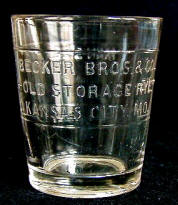 |
Consider, for example,
this Becker Bros. embossed glass. It dates from between 1900
and 1904, the only years the firm was in existence. Thus, it
is embossed, but pre-pro.
|
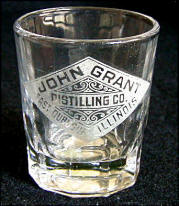 |
One of my favorite
Illinois glasses is this thick-walled and thick-bottomed
(but pre-pro) John Grant bar glass. |
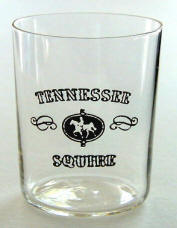 |
And conversely, the fact
that a glass is thin-walled does not mean that it is
pre-Prohibition. Take a look at this Tennessee Squire glass.
It certainly has the pre-pro look to it, but the
pre-pro database notes that this is a post-repeal glass,
made during the late 1960s by an Italian company for Jack
Daniels to honor Tennessee Squire. A set of four
gold-labeled glasses appeared on eBay in its original
mailer; the mailer was dated Jan 10, 1967. |
The Glasses
I wrote about the Chicago firm of Chapin and Gore in my
August 2005
column. Compare this company’s embossed pre-pro glass to its post-pro
version.
These two Chapin and Gore glasses could not be more dissimilar in
appearance. But compare them to the shot glasses of Barney’s Market
Club, another Chicago institution.
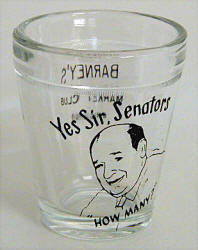 |
Its
post-prohibition glass is fairly common (left).
But Barbara Edmonson catalogs a
barrel-shaped glass on
page 199 of
Old Advertising Spirits Glasses whose apparent pre-pro
design is virtually identical to its post-Prohibition
brother (right). |
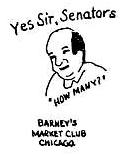 |
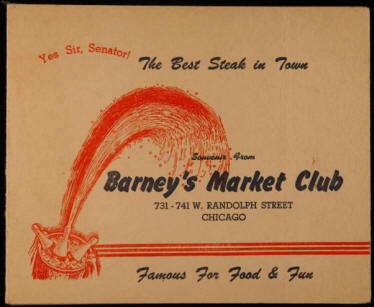
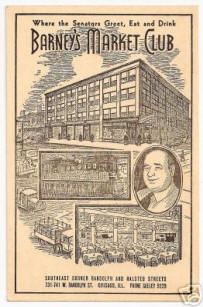
|
Jack Daniels No. 7 is an
institution.
Robin
notes in the database that no one is sure of the origin
of the No. 7 brand name. One story is that seven barrels of
whiskey became misplaced. When they were found, the clerk
marked "No. 7" on invoices for the whiskey that went out
from these barrels, and people began to write back for more
of that “No. 7” whiskey.
Here is the glass in
both pre-pro ...
|
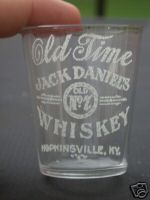 |
|
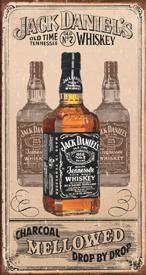 |
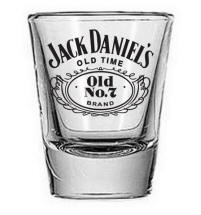
and post-pro versions.... |
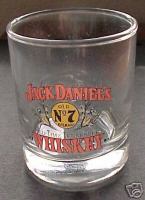 |
And speaking of No. 7: Most post-Prohibition glasses sell for just a few
dollars on eBay. An exception to this general rule is the green Jack
Daniels No. 7 “Ladies-Gentlemen-(Hog)” glass. Whenever this glass is
placed on the eBay auction block, it always results in spirited bidding.
But the concept of showing
humorous “small, medium, and (hog)” measurements on shot glasses is
not a new one. Many companies did this in the pre-pro years.
The “Baseball Whiskey” glass shown here (above right) is just
one of several that are in the pre-pro database.
|
This database notes that Paul Jones began making whiskey in
Georgia in 1865. In 1866 he moved to Louisville and bought
out (among other brands) Four Roses.
He continued to make medicinal whiskey
during Prohibition. As shown here, Paul Jones whiskey and
the Four Roses label remained in existence in the
post-Prohibition era. |
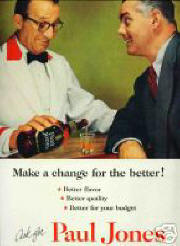
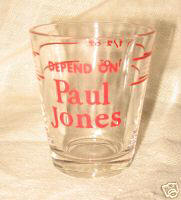 |
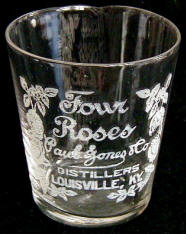 |
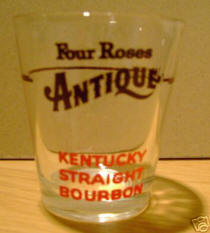 |
The database lists several pre-pro “nightcap”
novelty shot glasses. The George Truog glass shown here is probably one
of the most desirable. The two other glasses, which certainly appear to
be post-Prohibition, also show a figure wearing a nightcap, but this
time the illustration is more obvious and direct; the man is pouring a
“nightcap” as well.
to be continued...
|



